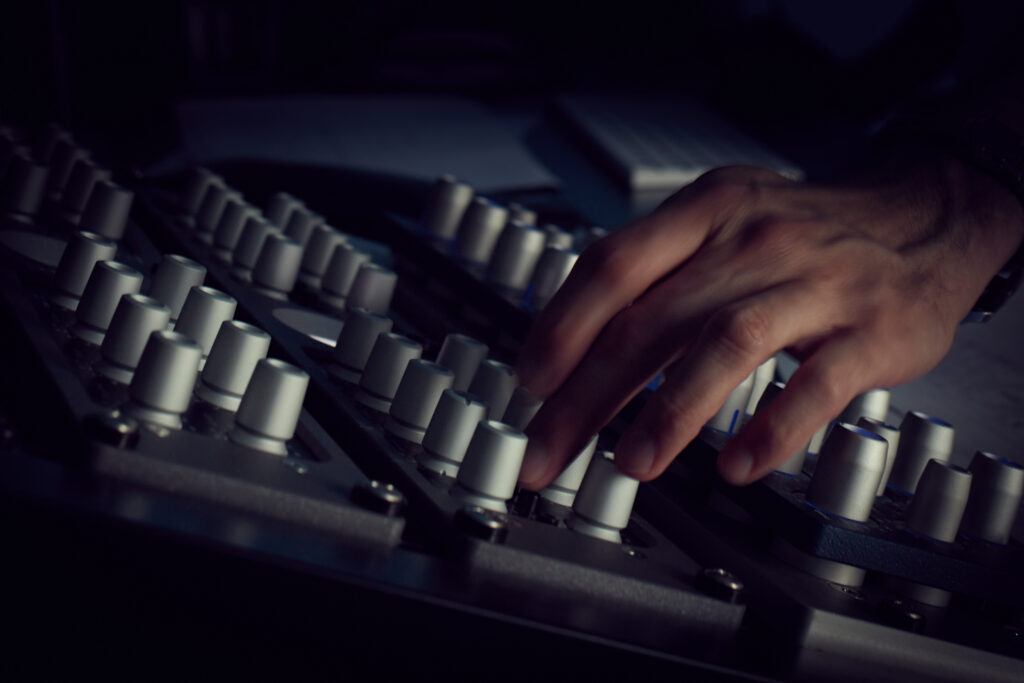
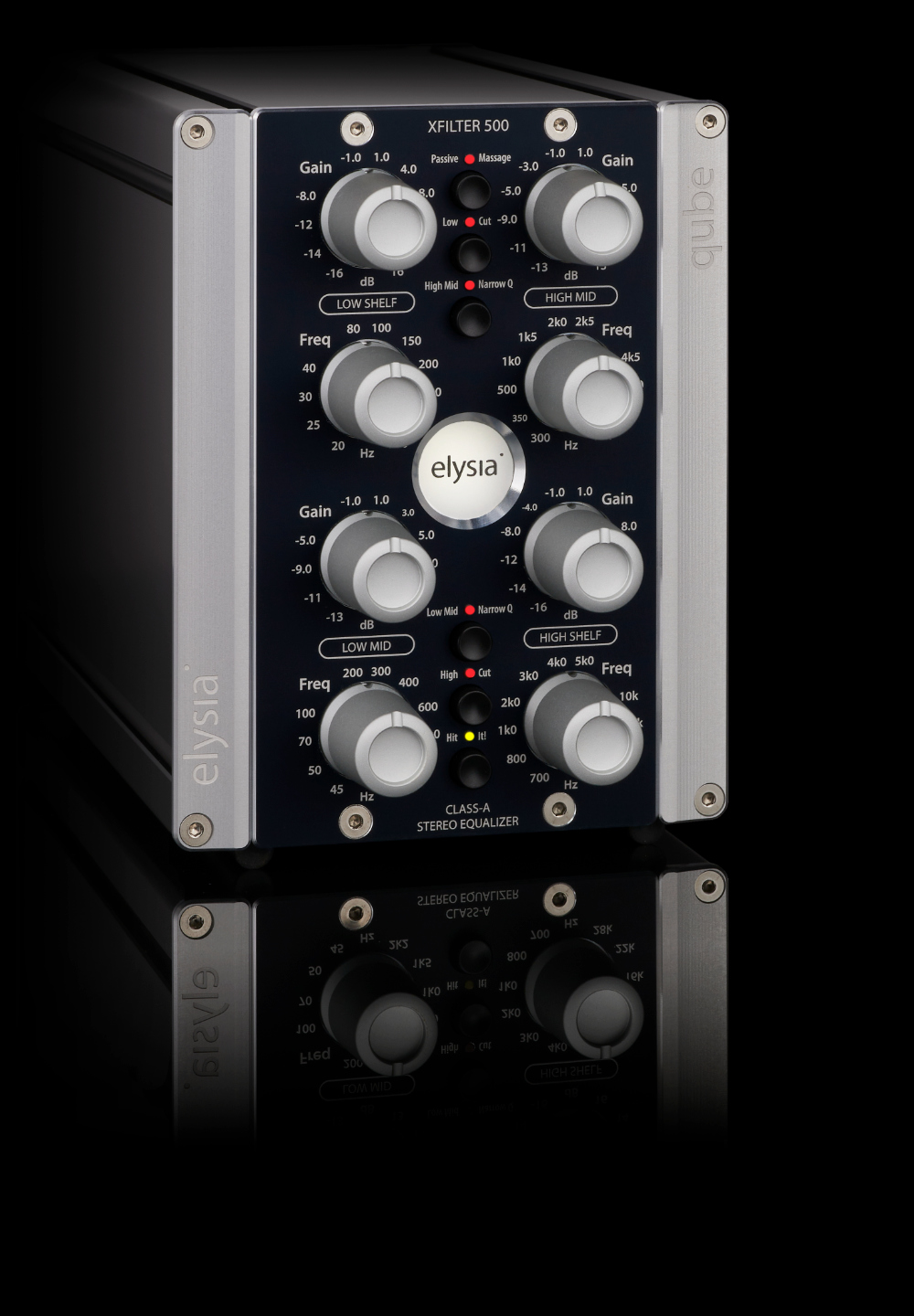

By loading the video, you agree to YouTube's privacy policy.
Learn more

By loading the video, you agree to YouTube's privacy policy.
Learn more

By loading the video, you agree to YouTube's privacy policy.
Learn more

By loading the video, you agree to YouTube's privacy policy.
Learn more

By loading the video, you agree to YouTube's privacy policy.
Learn more
xfilter unlocks an unprecedented level of sonic brilliance with the power of the 4-Band equalizer.
Choose between different examples including applications like recording, mixing or mastering, use good headphones or speakers. All you need to do is press Play and A/B between the bypassed and active sounds!
Featured artists in these examples: Schutzschall, GiveUsAnimalNames
Note: If you have technical difficulties and don't hear audio playing back, you may want to switch off silent mode on your mobile device.
Using an analog EQ on a stereo buss can be quite tricky, as only very few units offer the possibility to link their two mono channels for true stereo processing.
While there are so many compressors in the market that can be linked for stereo operation, why are there almost no EQs which can do this, too?
One of the main answers is component tolerances. Obviously, you want the two linked channels to behave exactly the same, but natural tolerances of potentiometers and capacitors counteract this ideal characteristic.
xfilter solves this problem by using computer-selected dual and quad layer pots as well as special low tolerance caps.
The outer bands of the xfilter show a lot of flexibility. In their standard mode, they are set up as sweet sounding high and low shelf filters that can be used to tailor the airiness and fundamentals of your tracks fast and efficiently.
As a special feature, you can independently switch these to become high and low cut filters with 12 dB per octave and an additional resonance peak at the knee frequency.
Especially bass frequencies can benefit from a low cut with resonance by obtaining a clean and punchy character. In the high frequency range, you can use the resonance filter to put an accent on a selected frequency without boosting the complete HF spectrum.
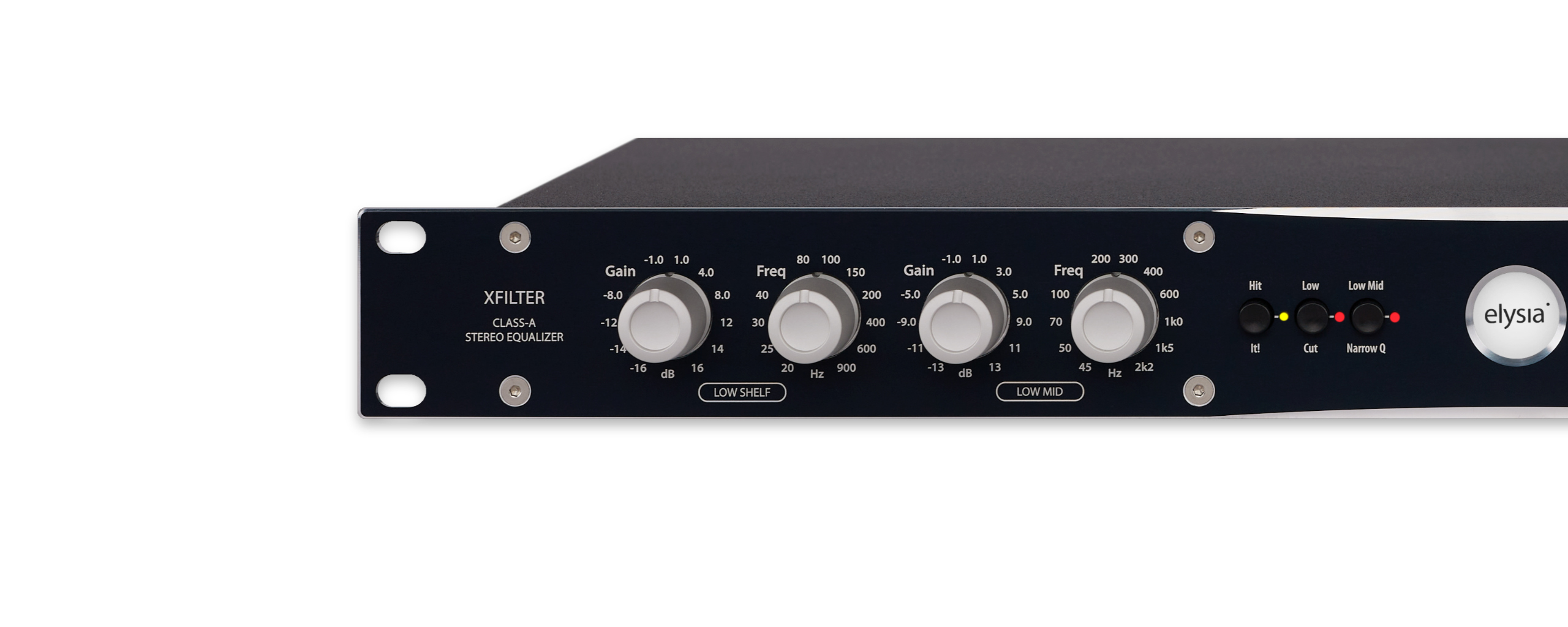
The filter quality of the two parametric mid bands can be switched between two characteristics: Wide (Q 0.5) and narrow (Q 1.0), based on the proportional Q principle.
When designing a parametric filter, you have quite a range of Q factors to choose from. After extensive listening, we decided to implement a choice of 0.5 or 1.0 in xfilter, as these parameters always result in what this machine is focused on: Very musical processing.
You will notice that very narrow Q factors are not offered here. These days, digital filters are used for notching narrow ranges to get rid of problematic frequencies anyway.
In addition to its four flexible active bands, xfilter features a switchable fixed LC filter for polishing the high frequency range. The filter has a slight resonance peak at 12 kHz and starts to fall of at 17 kHz.
This way, the saturation-like storage effect of the coil focuses on the area around the peak without pushing the complete high frequency spectrum too much. The inductors used in xfilter have their own shields to reduce outer influences like hum and all kinds of unwanted noises.
Now you know what the ‘Passive Massage’ is all about: Opening up the top end of your signals by pushing just a single button!
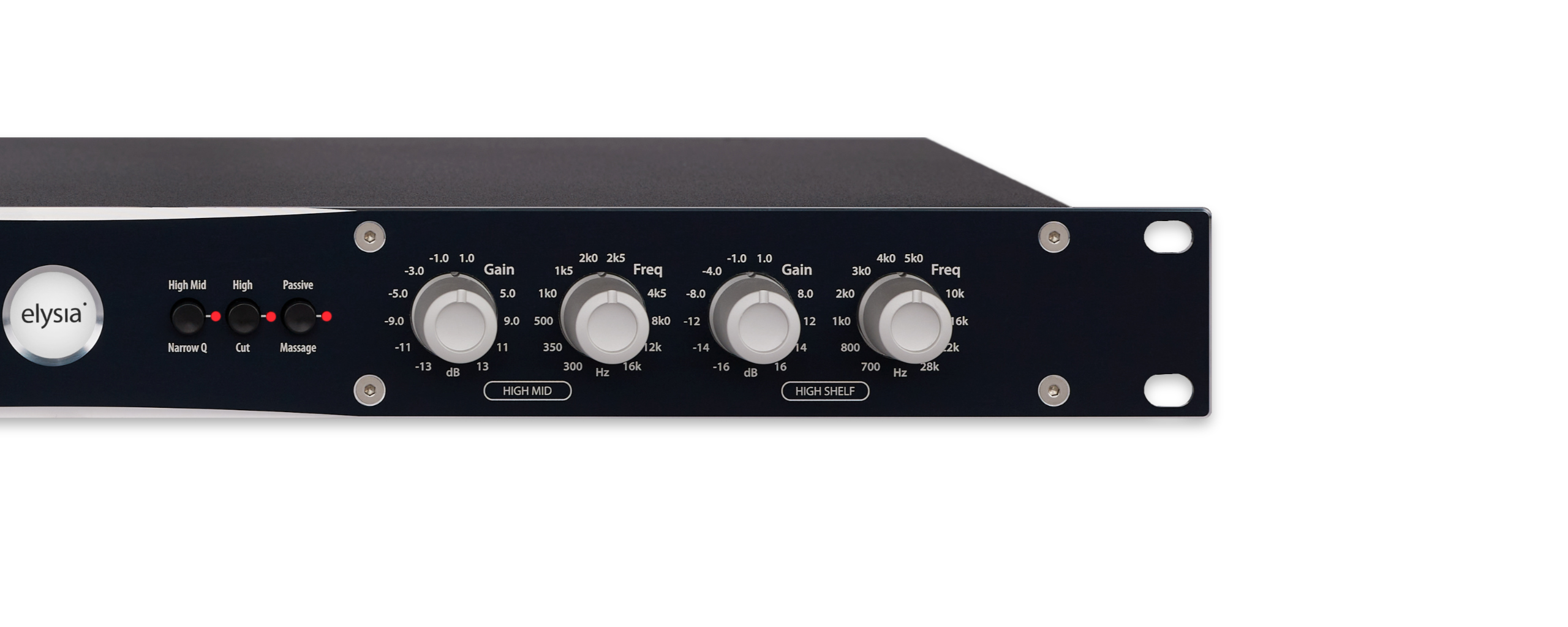
In a linked stereo EQ, the potentiometers need a lot of layers. The pots for setting the mixers (gain) have two layers each, while the pots for setting the frequencies even have a total of four layers each!
The problem occurs that every single layer has its own component tolerance, and while layer A could be at the absolute minimum of the allowed tolerance, layer B could be at the absolute maximum. As a result, the filter stages of the left and right channels would not behave the same.
To solve this, every single potentiometer in xfilter is measured and selected with an Audio Precision rig and computer routines written exactly for this task.
The PCBs of xfilter have a total of four layers:
Two of them are used for the audio circuitry, one is for power supplying traces, and the last one is a dedicated ground shield layer. But what’s the idea behind this?
The filter networks of the individual bands of the EQ become higher in resistance the lower their specific frequency is set. This makes them more vulnerable towards hum which is caused by electric fields.
As the additional ground layer is placed extremely close beneath the traces which carry audio, it is very efficient as a shield against unwanted noise interferences.
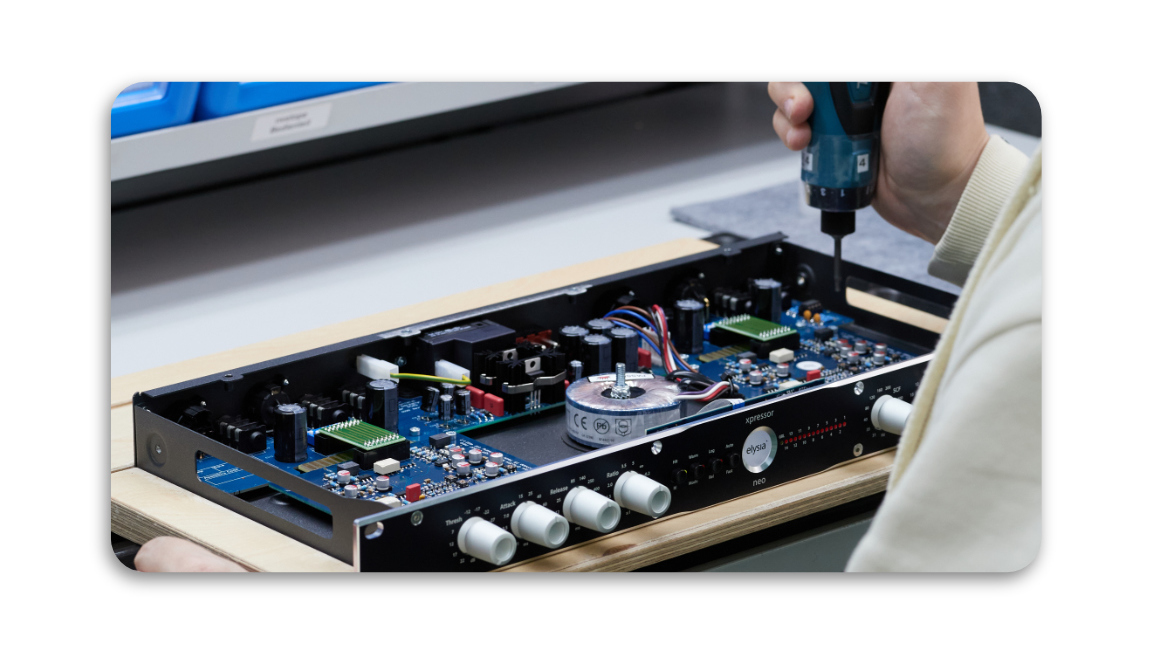
xfilter|Mastering Edition inherits the DNA of xfilter, offering pristine transparency that allows your music to shine. Every subtle detail and nuance are preserved, enabling you to achieve a polished, professional sound that captivates listeners.
While xfilter is a powerful tool for editing individual tracks during mixing, xfilter|Mastering Edition is specifically designed to take your mastering process to the next level.
It has been carefully optimized for mastering workflows and offers refined controls and extended headroom to achieve perfect results in the final mastering stages.
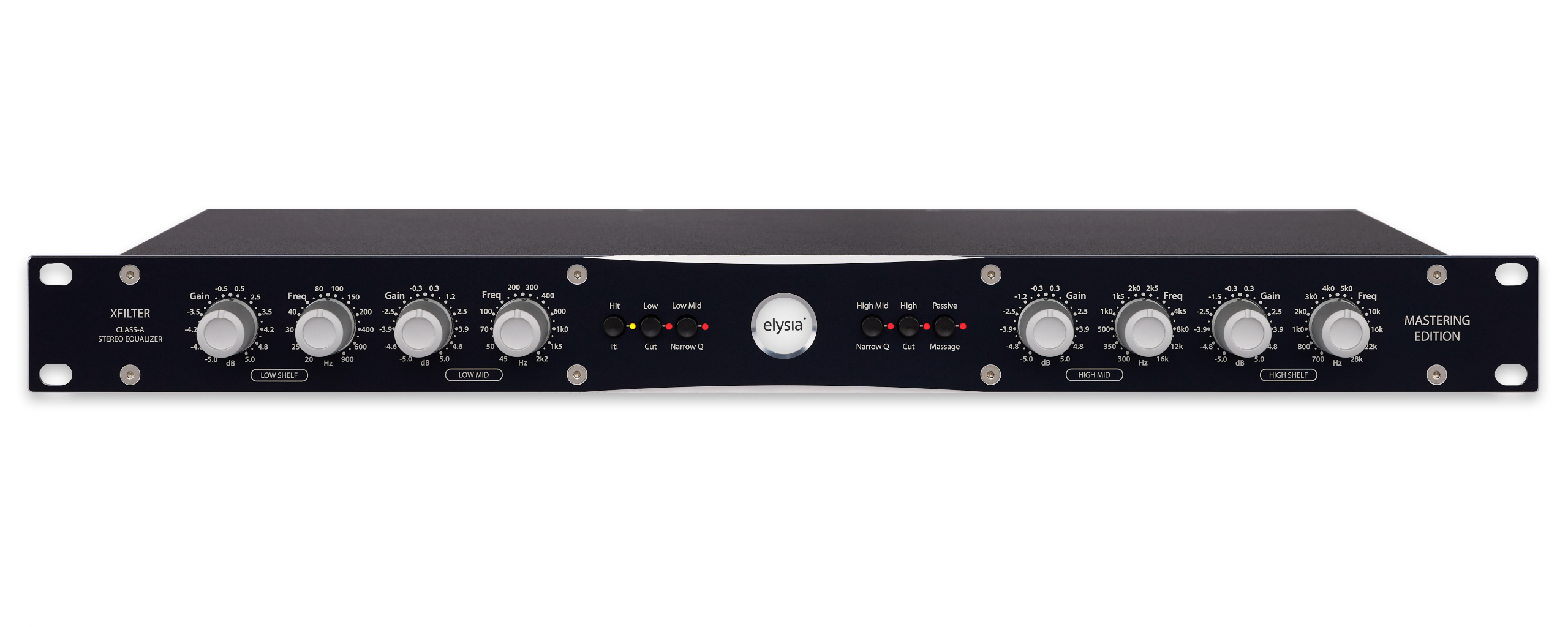
xfilter|Mastering Edition features precise control range of +/- 5dB with all four bands, allowing for accurate and repeatable adjustments of filter parameters. With various filter types, Q factor control, stepped potentiometers, and a very accurate detailed scale, it caters to demanding mastering needs. Its transparent processing preserves audio integrity, making it a go-to tool for precise and professional-grade mastering, empowering engineers and producers.
Unlock unprecedented space for audio mastering, preserving pristine quality with an extended +27 dB of headroom. You gain greater control over the dynamic range, enabling you to fine-tune the volume levels and nuances of each individual element within the mix. Whether you’re working with delicate acoustic recordings or powerful electronic compositions, xfilter|mastering Edition ensures that every detail and sonic subtlety can be precisely sculpted to perfection.
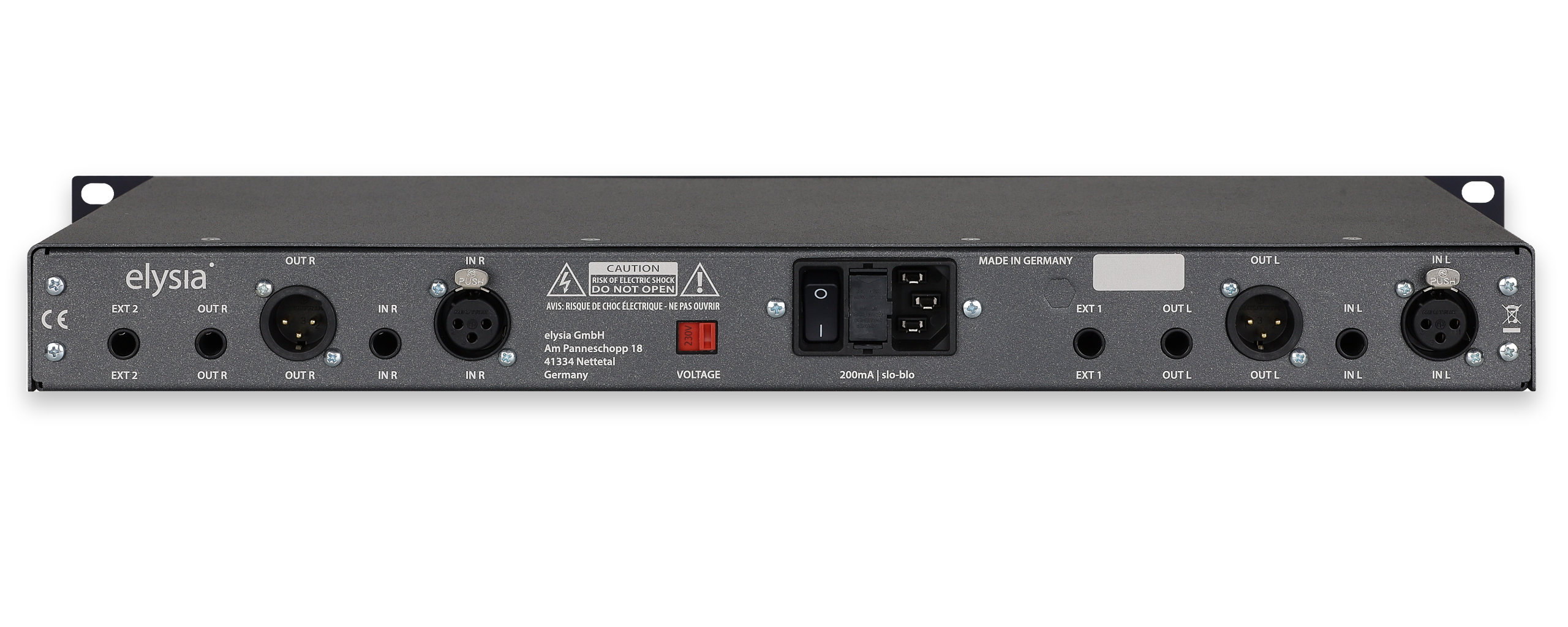
How do you get your favorite analog audio processors side by side of your laptop at home? What about your next tour or gig traveling the world?
We have unleashed our famous elysia analog audio processing hardware to make your musical life much easier, flexible and mobile with the elysia qube series.
A selected series of our famous 500-Analog Modules with Class-A Topology in a rugged, lightweight and travel-ready aluminium case with all the great pristine, transparent sound you will expect from us.
Analog to Go. Everywhere.
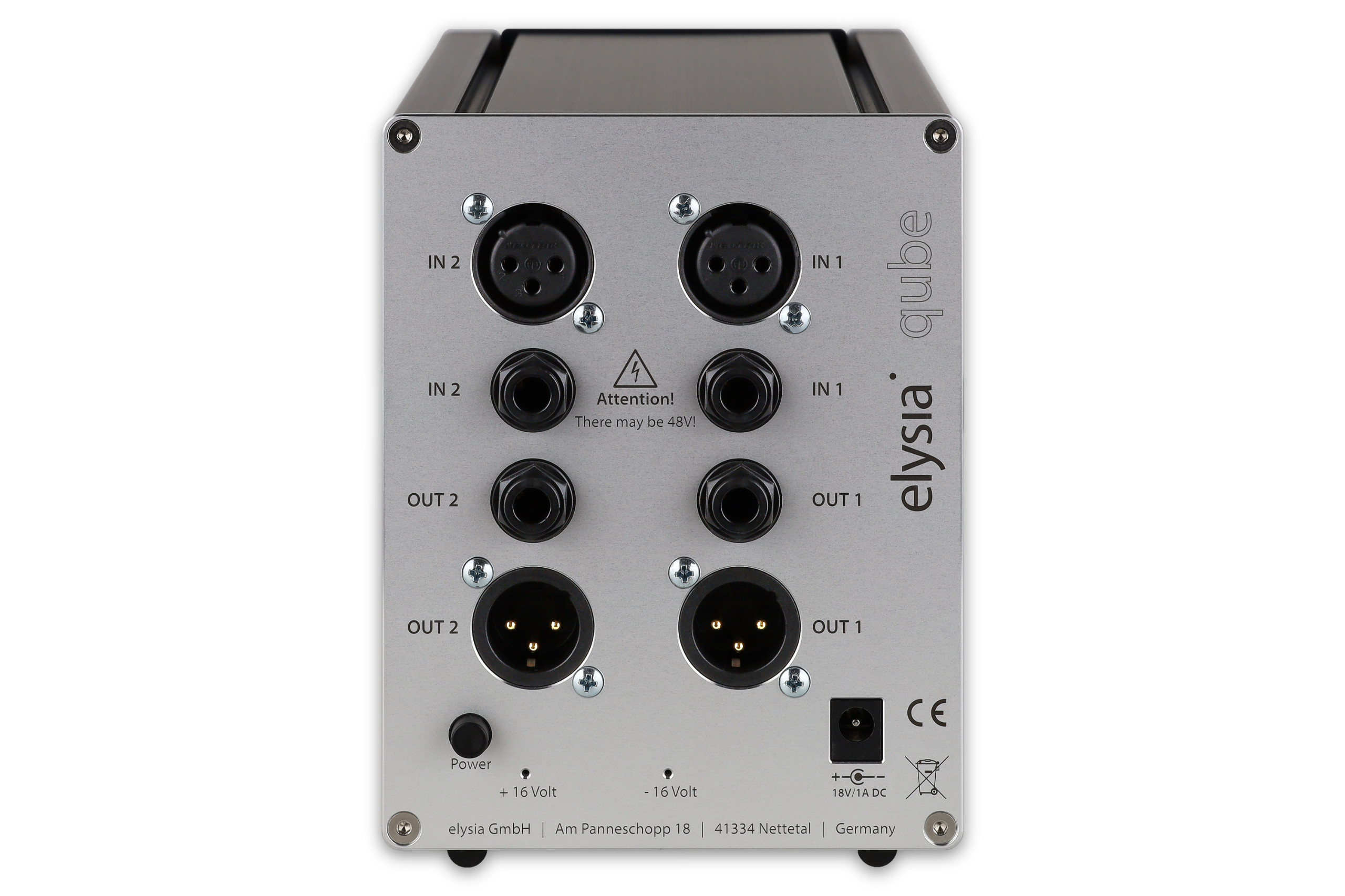
Frequency response:
<10 Hz – 400 kHz (-3,0 dB)
THD+N @ 0 dBu, 20 Hz – 22 kHz:
0,006 %
THD+N @ +10 dBu, 20 Hz – 22 kHz:
0,01 %
Noise floor, 20 Hz – 22 kHz (A-weighted):
xfilter:
xfilter|Mastering Edition:
-98 dBu
-92 dBu
Dynamic range, 20 Hz – 22 kHz:
112 dB
Level (xfilter):
Input:
Output:
Level (xfilter|Mastering Edition):
Input:
Output:
+21 dBu
+21 dBu
+27 dBu
+27 dBu
Impedance:
Input:
Output:
10 kOhm
68 Ohm
Dimensions (W x H x D, incl. Knobs):
1 HE Rack:
elysia qube:
19” x 1,75“ x 9,4“
483 mm x 44,45 mm x 238 mm
4,09” x 5,39“ x 8,4“
104 mm x 137 mm x 212 mm
Weight:
1 HE Rack:
elysia qube:
3,88 lbs / 1,76 kg
3,17 lbs / 1,46 kg
Power consumption (xfilter):
1 HE Rack:
elysia qube:
500 Series Module:
Power consumption (xfilter|Mastering Edition):
1 HE Rack:
16 Watts
10 Watts
210 mA
13 Watts
Introducing the xfilter and xfilter Mastering Edition: Revolutionize your audio production
Are you an audio professional looking for the ultimate tool to enhance your productions and achieve stunning sonic results? Look no further than the elysia xfilter and xfilter|Mastering Edition. These cutting-edge hardware processors have been meticulously designed to provide unparalleled control and precision, allowing you to shape your audio with unmatched clarity and depth.
The elysia xfilter is a versatile stereo equalizer that boasts an array of powerful features. Its fully parametric mid-band, high- and low-shelf filters, and high-pass and low-pass filters offer you endless possibilities to sculpt your sound. With its transparent yet musical character, the xfilter ensures that your audio retains its natural integrity while giving you the flexibility to make precise adjustments. Whether you’re working on mixing, mastering, or sound design in a recording session, the xfilter will become your go-to tool for achieving stunning audio results.
For those who demand even greater precision and control, the xfilter|Mastering Edition takes things to a whole new level. With enhanced circuitry and extended features, this flagship processor is specifically designed to meet the rigorous standards of mastering engineers. The xfilter|Mastering Edition provides you with expanded dynamic range and a precise control range for the most accurate adjustments possible. It allows you to fine-tune your tracks with surgical precision, ensuring every detail shines through in the final mix.
What sets the elysia xfilter series apart is its exceptional build quality and attention to detail. Crafted with the highest standards in mind, these processors deliver pristine audio performance and rugged reliability. The xfilter and xfilter|Mastering Edition are built to withstand the demands of professional studios and live sound environments, ensuring they will be your trusted companions for years to come.
Get your elysia xfilter or xfilter|Mastering Edition today, and elevate your audio productions to new heights. With their exceptional sound quality, unrivaled precision, and unwavering reliability, these processors will become indispensable assets in your arsenal. Don’t settle for anything less than extraordinary – choose the xfilter series and redefine your audio mastering experience.
Copyright @ 2024 elysia GmbH. All rights reserved. Am Panneschopp 18 | 41334 Nettetal | business hours from monday until friday from 9:00 to 17:00h (CET)
We need your consent before you can continue on our website. If you are under 16 and wish to give consent to optional services, you must ask your legal guardians for permission. We use cookies and other technologies on our website. Some of them are essential, while others help us to improve this website and your experience. Personal data may be processed (e.g. IP addresses), for example for personalized ads and content or ad and content measurement. You can find more information about the use of your data in our privacy policy. You can revoke or adjust your selection at any time under Settings.
If you are under 16 and wish to give consent to optional services, you must ask your legal guardians for permission. We use cookies and other technologies on our website. Some of them are essential, while others help us to improve this website and your experience. Personal data may be processed (e.g. IP addresses), for example for personalized ads and content or ad and content measurement. You can find more information about the use of your data in our privacy policy. Here you will find an overview of all cookies used. You can give your consent to whole categories or display further information and select certain cookies.